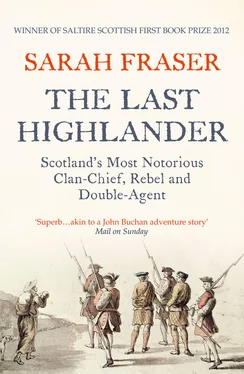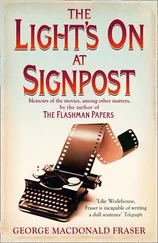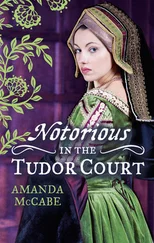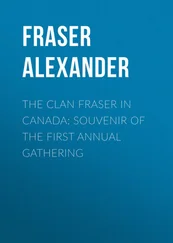When they could escape observation, Simon and his friends frequented the taverns. Failure to keep up enough praying, getting caught drinking or dallying with the serving lasses (Jean Calvin thought lust a sickness only marriage could cure), playing dice and cards, loud singing, and persisting in holding worldly and semi-seditious conversation in their rooms, all incurred punishments. ‘Some crimes are punished corporalie, others by pecunial mulct, and grosser crimes by extrusion.’ You were thrashed, fined, or thrown out.
But Simon’s claim of time-wasting at university disparages the gifts it gave him: tactics, rationale and strategy for effective resistance. All his life, he never doubted Machiavelli’s contention that the ends justified the means. It was not good enough to be merely strong and upright. Machiavelli advised that ‘a Prince … should learn from the fox and the lion; because the lion is defenceless against traps and a fox is defenceless against wolves’.
At the end of his degree course, in the winter of 1694/95, Regent George Fraser offered Simon the chance to continue his studies in a civil law degree, an increasingly attractive route for modern clan leaders seeking to avoid blood feuds. The courts were becoming the more usual battlegrounds for defeating clan enemies, in place of the martial law of the glens. Simon began the course at Aberdeen, but then very suddenly withdrew from it. To understand why, it is necessary to go back nine years to 1685 and the reasons he delayed coming to university in the first place: a wedding – specifically its special marriage contract – and a revolution.
TWO
To be a fox and a lion, 1685–95
‘One must be a fox to recognise traps, and a lion to frighten wolves’
– MACHIAVELLI
In 1685, Simon was at school in Inverness when he learned that his seventeen-year-old cousin, Hugh, the 9th Lord Lovat, had taken a wife. The choice of a chief’s bride was of key importance to the political and dynastic interests of the clan, and it would have been conventional for Lord Lovat’s closest Fraser kin to advise him, Thomas Beaufort foremost among them. But no Fraser was consulted. Hugh Lovat’s maternal uncle, Sir George Mackenzie of Tarbat, made sure of it: he had kept the Fraser cousins apart for many years in order to isolate and control the young boy chief.
Hugh had been orphaned at the age of six, when his father, the 8th Lord Lovat, died at home aged just twenty-nine. After his funeral, the Fraser gentlemen allowed Mackenzie of Tarbat to take young Hugh away. Thereafter he was raised apart from his sisters and his Fraser kindred in Sir George’s home, Castle Leod, fifteen miles from Dounie. That the leading Fraser men allowed a Mackenzie to step in and dominate their clan showed how weak the Frasers had become. The Reverend James harangued the clan gentry for tolerating Tarbat’s dominance of young Hugh. ‘He that hath the blood and spirit of his ancestors running in his veins,’ Reverend James thundered, ‘cannot be so much turned into a statue or idle spectator … to look what our … predecessors have been, as well as what ourselves at present are, lest falling short of the imitation of their immortal actions, we so strangely degenerate as not to understand what we ourselves ought to be!’ But no amount of eloquent rhetoric by the Reverend could stir Thomas of Beaufort or other principal Frasers to rescue the boy.
A clan could only prosper under a strong chief, but it was clear from an early age that Hugh would not be that person. The Reverend James judged him as ‘always but a man of very weak intellectuals’. Bad chiefs came in the shape of weak men, children, women or old men. During Simon’s youth, Clan Fraser entered a phase where it got all four – in that order. Two generations of ‘virulent Mackenzie women’, including Hugh’s late mother, had left the Lovat estates rundown and drowning in debt. The Frasers of Beaufort were sidelined and Tarbat inserted his own kindred to manage the clan, handing the Mackenzies leases on Fraser lands. He even gave a profitable little sinecure to the high chief of the Mackenzies, the Earl of Seaforth, as a compliment.
Sir George’s standing rose within his own clan as he interfered in that of his nephew’s. Tarbat competed for high public office for sixty years, during an era ‘of extreme ruthlessness and cunning intrigue’, according to one historian of the 1600s, which culminated in ‘the final triumph of the various egomaniacs, bigots and embezzlers who’ by the final decade of the century would rule the roost in Edinburgh. During the period of his nephew, Hugh Lovat’s, minority, Sir George was out of favour and deprived of office.
Tarbat intended to use young Hugh to boost his political ambitions in Edinburgh and build up a local power base from which to launch himself back into the political fray. His search for a suitably connected bride for Hugh took him to Lord John Murray, who had been rising high in the ranks of the Scottish administration in Edinburgh and Whitehall since the accession of King James II, and on to his sister Lady Amelia Murray. In terms of breeding the Fraser elite liked the idea. Not only was Lady Amelia the daughter of the Stuart Royalist champion, the Marquis of Atholl, but she was also related to several Scottish noble families and crowned heads of Europe. The Murrays came from Blair Atholl in Perthshire, fifty miles north of Edinburgh, between the Highlands and the Lowlands. Lord John was married to Katherine, sister of the Duke of Hamilton. These two, the Murrays and Hamiltons, intrigued to dominate Scottish politics and rule the country for absent kings.
Scotland was a sovereign nation, but the Scottish sovereign had resided in London, not Edinburgh since 1603 (when James VI of Scotland also became James I of England on the death of Elizabeth I). In 1685, James II ruled from Whitehall through a rotating oligarchy of ambitious Scottish magnates who dominated the Scottish Parliament in Edinburgh. Lord John Murray was one of these. Murray, son and heir to the Marquis of Atholl, was a favourite of King James’s. Atholl and Lord Murray also saw the appeal of the match. Clan Fraser’s star may have been waning, but it still had many attractions. The extensiveness and location of Fraser country at the heart of the Highlands could vastly increase Murray influence in Scotland and add handsomely to Lord Murray’s growing political profile.
Tarbat only saw the marriage from his own point of view, something he almost immediately regretted. Simon wrote later that the union of Hugh and the nineteen-year-old Amelia, now Lady Lovat, should have ‘accomplished the barbarous and long-continued designs’ of the Mackenzies ‘to win the family of Lovat and extirpate the name of Fraser out of the North of Scotland’. It so nearly did, and undoubtedly would have done, had it not been for Simon Fraser of Beaufort.
Hugh Lovat’s marriage naturally affected Simon’s standing in the clan, pushing him a step away from the topmost branch of the tree. But the Beauforts expected that. They were ‘spares’ to the heir, and a chief must marry. What irked Simon Fraser was not the union with Lady Amelia, but an extraordinary pre-nuptial agreement planted in the match that affected the future inheritance of the Lovat titles and estates. It would prove to be of such dubious legality that Tarbat and Murray let it lie dormant for nearly ten years, so as not to draw attention or resistance to their schemes from other magnates. For now young Hugh and Amelia settled to the only job Sir George entrusted his nephew to accomplish without his guiding hand – to make lusty male heirs.
But it was another inheritance problem that delayed Simon from going up to Aberdeen. He was preparing to leave Tomich in the autumn of 1688 and join Alexander at university when news came of the landing of William of Orange and his invasion force at Torbay in Devon. Their Stuart King, James II, had abandoned his thrones and was now rallying support.
Читать дальше












